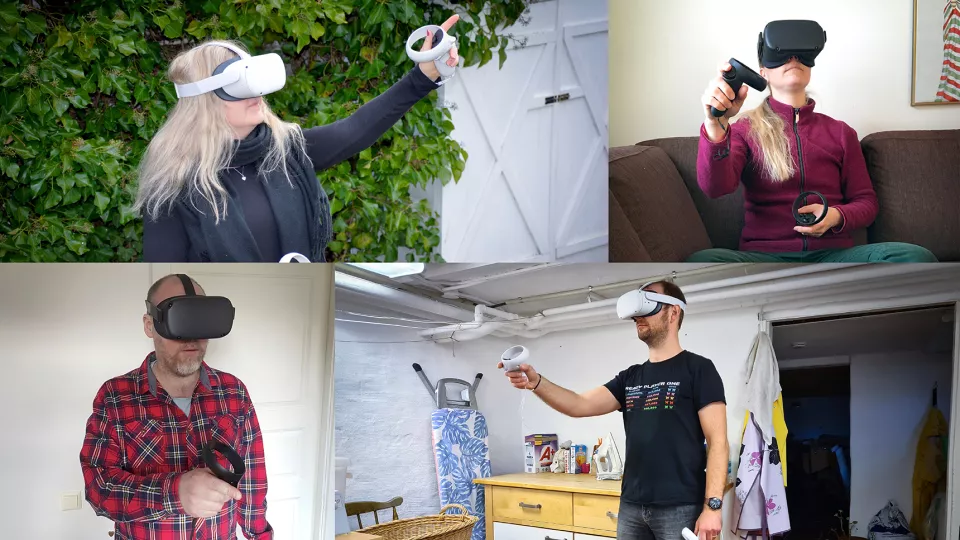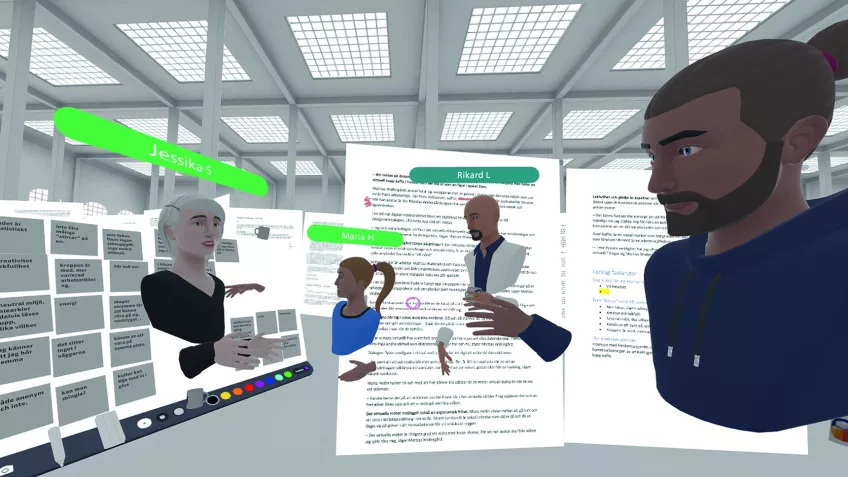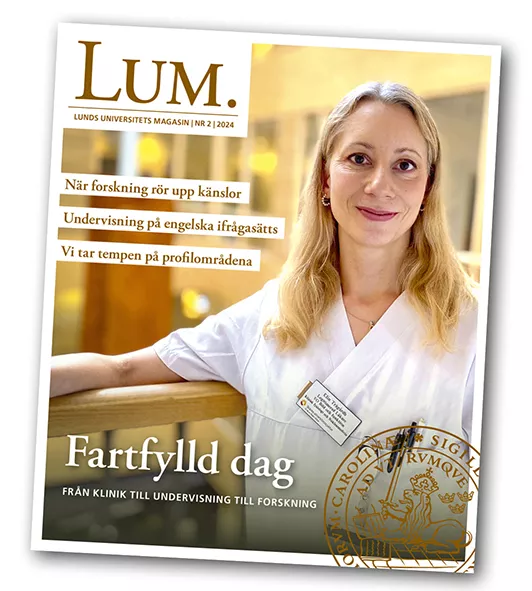He is holding a virtual cup of coffee and looks a little like a figure in the Sims computer game.
“Now, running remote meetings feels creative and enjoyable”, says Mattias Wallergård.
His avatar leans in a relaxed manner against a pillar in the lounge-like setting that is currently his work environment. There are meeting rooms, whiteboards, sofas and a green park outside the window. When Wallergård speaks, you hear his actual voice but see the avatar’s expressions and eye movements.
At a time when digital meeting fatigue has become an established phenomenon, these LTH researchers are trying to find new ways to meet.
“My colleagues and I meet in the virtual reality-based remote tool, Glue, where we hold both daily check-ins and meetings to analyse research data”, says Wallergård.
Working on VR-project
It is perhaps not so surprising that Wallergård is stretching the boundaries of the virtual world. He is researching interaction design and virtual reality is part of his everyday work. He describes himself as a VR nerd.
For the past couple of years, Wallergård and his colleagues Rikard Lundstedt and Maria Hedin have been working on an EU project about elderly people experiencing natural environments in virtual reality. The project is now at an analysis stage and large amounts of data are to be reviewed.
“In a pandemic-free time we would have posted lots of A4 sheets in a classroom, made notes on a whiteboard, photographed and then taken down the material before the next activity in the classroom”, says Wallergård.
But in the virtual meeting environment, the researchers have a large industrial-type space at their disposal. The sheets of paper are several metres high and fill the room like enormous works of art in an exhibition.
The feeling of being present is stronger
The researchers move around the room with their avatars. Now and then, they pause at the documents displayed, converse and take notes – directly on the large sheets of paper or on virtual whiteboards that magically appear when needed.
“When we meet in virtual reality, we have a completely different focus than when we see each other at our computer screens. The feeling of being present is stronger and there are no other distracting stimuli. It is here and now”, says Wallergård.
His colleague Rikard Lundstedt thinks that the dialogue flows more smoothly in virtual reality than in a digital meeting at the computer screen.
“A conversation in virtual reality feels more like the real thing. Expressions, gestures and throat-clearing become clearer and it is easier to understand when another meeting participant wants to interject”, he says.
The virtual meeting enables ergonomic freedom. Maria Hedin alternates between walking around and sitting cross-legged on her sofa. Lundstedt is also on the move but chooses to lie on the floor of his home office from time to time, to stretch out his back.
“The virtual meeting is a meeting with physical movement. To bring life to my avatar, I must move around myself”, says Wallergård.
Funny situations sometimes arise when the avatars change position or happen to get too close to another avatar colleague.
“During our first virtual meeting, I wanted to maintain the same distance from my colleagues as I would in the physical world. But I don’t think about that anymore. The social codes we are used to have been erased, which I experience as positive”, says Hedin.
Coffee is a social marker which has stuck around in the virtual meeting world. Wallergård – who besides being a VR nerd is also an inveterate coffee-drinker – likes the idea of virtual coffee.
“In my physical reality, I usually have a cup of coffee in my hand; why would I not have a virtual one?” wonders Wallergård, as his avatar displays his characteristic and somewhat fixed smile.




